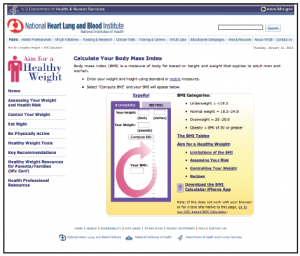By Candace Chemtob, B.S. and M.S. in Human Nutrition
 Squash players, like other athletes, can feel the pressure to attain and maintain an “ideal” weight.” After all, there can be performance benefits associated with increased lean body mass and lower levels of body fat. However, unsafe weight loss practices can have an unintended negative effect on your athletic performance as well as on your overall health and well-being. Athletes, coaches, and parents should be educated on how to lose weight safely.
Squash players, like other athletes, can feel the pressure to attain and maintain an “ideal” weight.” After all, there can be performance benefits associated with increased lean body mass and lower levels of body fat. However, unsafe weight loss practices can have an unintended negative effect on your athletic performance as well as on your overall health and well-being. Athletes, coaches, and parents should be educated on how to lose weight safely.
The concept is simple: to lose weight you have to consume less energy (calories) than your body uses. However, as with many things in life, it is “easier said, than done” and this is certainly true in the case of weight loss. The astonishing fact that 95% of diets do not achieve lasting results (BBC.com), illustrates this point. Partly to blame for this failure rate, is misinformation. With governmental oversight lacking, manufacturers and weight loss “programs” can make unsubstantiated promises of quick weight loss using unproved and often unsafe products and methods.
The key to successful weight management is to understand some basic concepts and to use common sense:
- First and foremost, this article is written with the adult athlete in mind. Weight loss in children should be medically supervised. Dieting can have serious and often irreversible negative effects on children, including, but not limited to, stunted linear growth (height), decreased bone mass,increased injuries and fractures, and an increase in the incidence of disordered eating habits.
- Determine your goal weight. One method to assess and classify body weight is body mass index (BMI), which is weight (kg)/ height (m²). A normal, healthy BMI range is 18 to 25 and can be calculated easily by using a “BMI” calculator (www.nih.gov). For elite athletes, because BMI does not take into account varying degrees of lean body and fat mass, advanced techniques to measure body composition, such as DEXA and bio-impedance are recommended to determine actual body composition and weight goals.
- For the non-elite athlete, with a healthy BMI, the desire to lose weight is purely aesthetic. Before embarking on a weight loss program, please consider the amount of effort (and perhaps suffering) that will be required to lose weight. If you make a commitment to keeping your weight stable, you may also have a better shot at long-term successful weight management.
- Lose weight in the off season. Dieting depletes glycogen stores quickly (by one third after three days on a low calorie and carbohydrate diet), the major storage form of carbohydrates in the body. When glycogen stores are depleted, blood sugar levels drop and performance drops precipitously.
- Steer clear of diet programs that promise quick weight loss. Bottom line: quick weight loss guarantees quick weight regain. Starvation or very low carbohydrate diets show initial “fantastic” weight loss results! But don’t get too excited, you are losing primarily water weight! When you “come off” these unsustainable diets, you will regain water weight as quickly as it was lost. To make matters even worse, these extreme diets accelerate the breakdown of muscle mass. For an athlete, this can translate into a loss of strength and speed. Additionally, less muscle mass lowers your metabolic rate making it easier to gain even more weight back.
- Nutritional supplements: Risk outweighs benefit. Nutritional supplements are not regulated by the FDA or the USDA and are notoriously contaminated with unlabeled ingredients, such as medications and other unsafe compounds. The benefits are questionable, as the claims are mostly unsubstantiated.
- To achieve lasting results, lose weight slowly at a rate of approximately 1 pound per week. Create a calorie deficit of 500 calories per day by a combination of eating less and playing more squash. Given that one pound of body weight is approximately the equivalent of 3500 calories, this calorie deficit can produce a weight loss of 1 pound per week.
- Minimize the loss of muscle mass: Lose weight slowly and eat enough protein. Studies have shown that athletes have higher protein needs than non-athletes and for squash players baseline protein needs are 1.2 to 1.4 g protein per kg.
- Not all calories are created equally. Don’t simply count calories and leave yourself short on nutrients. The nutrient quality of the food you eat is key to being healthy. Fruits and vegetables offer the “most bang for the buck” meaning that they are high in nutrients (vitamins, minerals, and fiber), but low in calories. High fiber grains, lean meats, and fat free (or low fat) dairy foods are all part of a healthy diet. Avoid “empty calories,” those low in nutrients and high in calories, such as processed foods, fried foods, snack foods, sweets, and alcohol.
- Eat slowly and enjoy your food. There is a delay of 10 to 15 minutes between when the stomach is full and the brain gets the message. Eating slowly will help prevent overeating!
- Eat a big breakfast! What you don’t eat at 9 am, you will eat at 9 pm. Remember the basic component in food is energy measured as calories. You need energy at 9 am to maximize your performance at work or school. Don’t make the mistake of eating very little at breakfast, or skipping it altogether. This leads to a major calorie deficit by the end of the day, leads to out of control overeating, and this is a strategy that never works.





